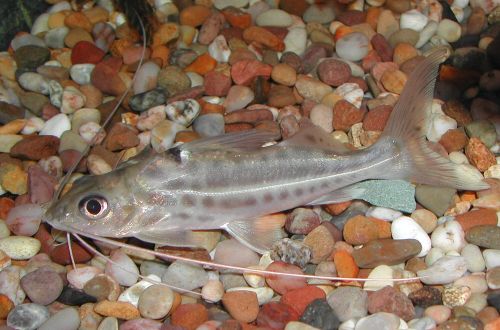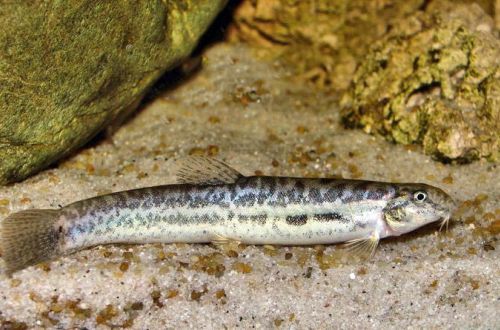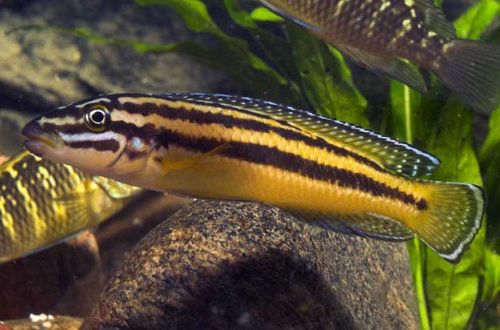
Four-striped pimelodus
The four-striped pimelodus, scientific name Pimelodus blochii, belongs to the Pimelodidae family. This species has many names, in each individual country this catfish is known under different names, the largest number of them in Brazil, where it mainly lives.

Contents
Habitat
Catfish inhabit much of South and Central America, from Panama to Brazil, and are found in the Amazon and Orinoco river systems, as well as in the Gulf of Paria and throughout most of Guyana. The fish is able to exist in brackish and fresh conditions, prefers a moderately fast flow of water. Living in the near-bottom zone, it feeds on insects and very small fish, but will not bypass plant foods.
Brief information:
- The volume of the aquarium – from 400 liters.
- Temperature – 20-26°C
- Value pH — 6.0–7.5
- Water hardness – 4–10 dGH
- Substrate type – sandy
- Lighting – subdued or moderate
- Brackish water is permissible in a concentration of 51 g per liter
- Water movement – moderate or strong
- The size of the fish is up to 35 cm.
- Food – any food
- Temperament – peaceful
- Keeping in a group of 5-6 individuals
Description
Quite large in the wild, it reaches 35 cm, however, in the aquarium it rarely exceeds 20 cm. The color is silver-gray with distinct four dark gray stripes. As they get older, they often lose this stripe alternation. Like most catfish, the body is somewhat flattened from above, the triangular lateral fins are parallel to the belly and, when moving, like wings, glide over the ground surface. A distinctive feature is the presence of long antennae, with the help of which the fish finds food for itself, feeling the surrounding space and objects. For a long time it was believed that the ray of the dorsal fin has poison, but later studies have refuted this point of view, it is safe for people.
Food
The four-striped pimelodus is unpretentious in terms of diet, eats all types of dry commercial feeds with pleasure. An important condition is that the food must be sinking, since the fish lives at the bottom and will not look for food near the surface, in addition, the catfish prefers to feed at night.
Maintenance and care
Relatively easy to maintain and does not require special maintenance. Prefers turbid water, similar to the bottom layer of the Amazon and tributaries, but adapts to clear water, so there is no need to artificially reduce the visibility of water in the aquarium. The recommended water change is 10 – 15% every week or 25% every other week.
Due to its size, the catfish needs a spacious aquarium from 400 liters with enough space for swimming. Shelters made of snags or other decorative elements should be provided. Lighting is moderate, provided that there are floating plants that provide additional shading. Smooth gravel or sand is the best type of substrate for these catfish to prevent damage to their antennae. Water parameters can vary, even significant, but gradual drops do not cause inconvenience, which is associated with a wide habitat for catfish in nature, even in brackish waters. However, it is not clear how prolonged exposure to hard water affects, so it is recommended to provide the required conditions.
Behavior and Compatibility
Peaceful schooling fish, however, should not be kept together with small species. The latter can become food. Also, slow-moving or fish with large fins may experience problems; in the dark, catfish will constantly stumble upon them, feeling them with their antennae. It is advisable to keep in a group of 5-6 individuals.
Breeding / breeding
Do not breed in the artificial environment of aquariums. In the wild, spawning occurs once a year during the rainy season, and only for a short period of time. Catfish are believed to migrate up rivers during breeding season.
Diseases
Under proper conditions, diseases were not observed. Since the fish does not have scales, in case of infection with ichthyophthyriasis, treatment is difficult by conventional means, more information about the diseases can be found in the section “Diseases of aquarium fish”.





